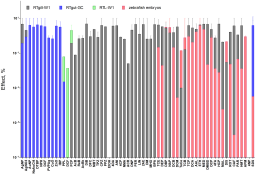A validated algorithm for selecting non-toxic chemical concentrations
Main Article Content
Abstract
The maximal chemical concentration that causes an acceptably small or no effect in an organism or isolated cells is an often-sought-after value in toxicology. Existing approaches to derive this value have raised several concerns; thus, it is often chosen case-by-case based on personal experience. To overcome this ambiguity, we propose an approach for choosing the non-toxic concentration (NtC) of a chemical in a rational, tractable way. We developed an algorithm that identifies the highest chemical concentration that causes no more than 10% effect (≤ EC10) including the modeled 95% confidence intervals and considering each of the measured biological replicates; and whose toxicity is not significantly different from no effect. The developed algorithm was validated in two steps: by comparing its results with measured and modeled data for 91 dose-response experiments with fish cell lines and/or zebrafish embryos; and by measuring actual effects caused by NtCs in a separate set of experiments using a fish cell line and zebrafish embryos. The algorithm provided an NtC that is more protective than NOEC (no-observed-effect-concentration), NEC (modeled no-effect concentration), EC10 and BMD (benchmark dose). Despite focusing on small-scale bioassays here, this study indicates that the NtC algorithm could be used in various systems. Its application to the survival of zebrafish embryos and to metabolic activity in cell lines showed that NtCs can be applied to different effect measurements, time points, and levels of biological organization. The algorithm is available as Matlab and R source code, and as a free, user-friendly online application.
Article Details
Articles are distributed under the terms of the Creative Commons Attribution 4.0 International license (http://creativecommons.org/licenses/by/4.0/), which permits unrestricted use, distribution and reproduction in any medium, provided the original work is appropriately cited (CC-BY). Copyright on any article in ALTEX is retained by the author(s).


